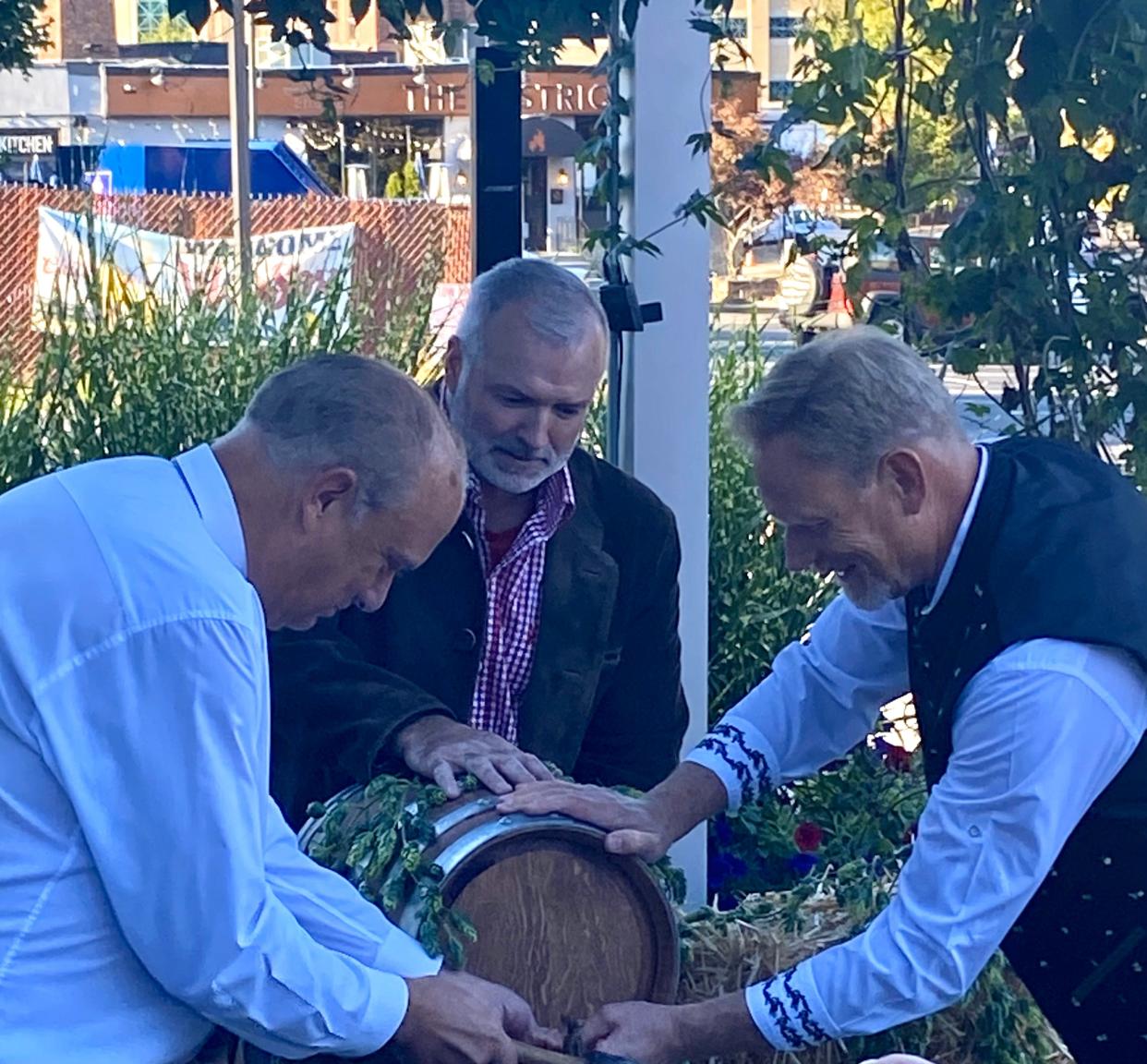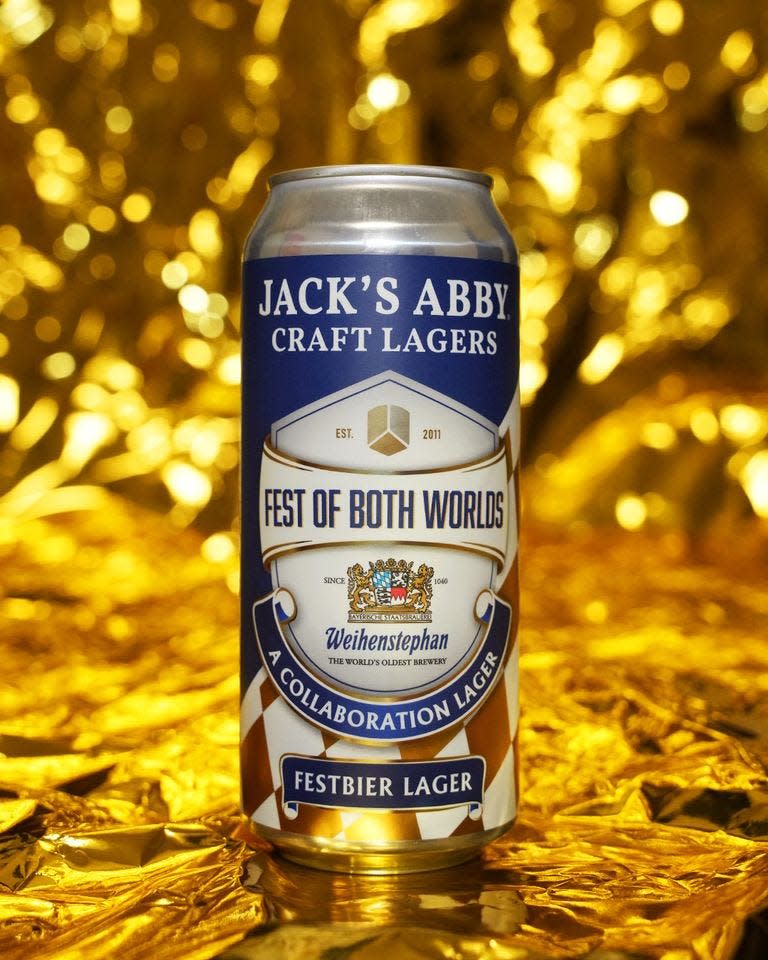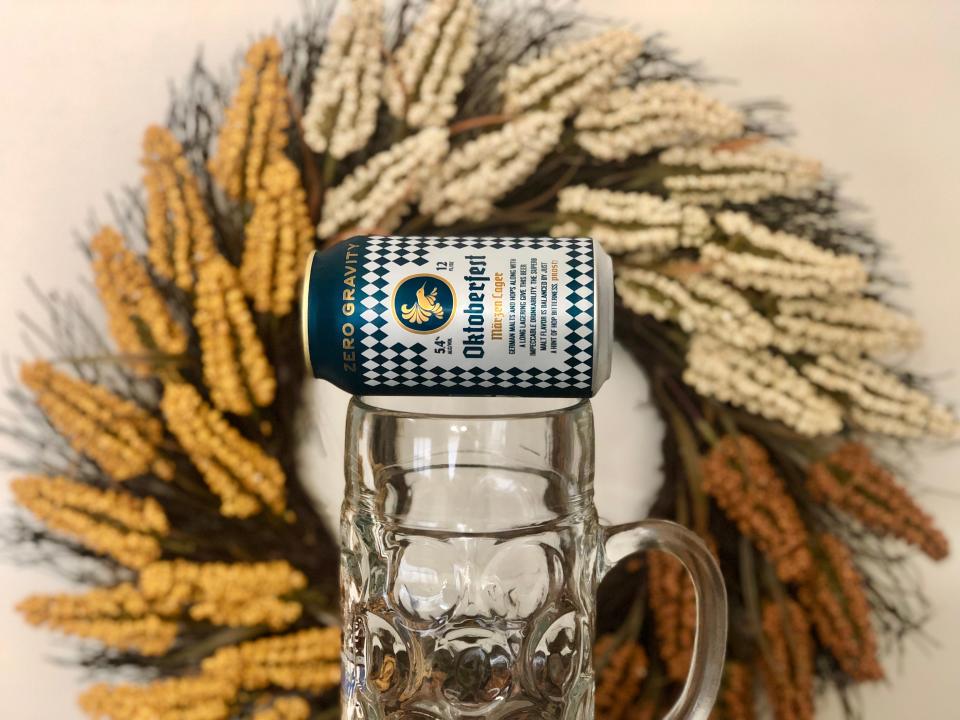From Bay State Brewing to Jack's Abby and more, Oktoberfest brings exciting new beers

On Sept. 16, for the 72nd time since 1950, the mayor of Munich hammered an ornate spigot into the first barrel of lager to begin the 188th Oktoberfest. Last week, for just the third time, the mayor of Worcester tapped a barrel of Bay State Brewing Co.’s “BeckToberfest” lager to kick off the brewery’s tribute to Bavarian brews and food.
Both officials wielded large mallets for the ceremonial tapping.
Mayor Dieter Reiter of Munich, well-trained in such tasks, got the beer flowing with one good strike. Worcester Mayor Joseph Petty needed several taps.
Bay State co-founder Chip Jarry admitted a day later, though, Petty’s swing had improved. “The tapping seems to get better every year,” he said.
The same sentiment rings true of the quality of traditional German lagers — specifically those consumed in epic quantities inside and outside the world’s largest folk festival, which concludes Oct. 3. — produced by our local craft breweries.

A favorite time for drinking beer
Autumn has always been my favorite time of year for drinking beer, when intermingled with the multitude of IPAs and pumpkin ales we find Festbier and Märzen (mare-tsen), crisp, floral, malty classics of German brewing. And I’ve noticed far more locally-produced examples of these lagers than previous years — about a dozen different options at one store I visited recently.
The state’s titan of lagers Jack’s Abby has led the way, releasing what co-founder Jack Hendler calls his best version of “Copper Legend,” a Märzen, in over a decade and collaborating with the 983-year-old German brewer Weihenstephan (y-en-steffan) on “Fest of Both Worlds.” Jack’s Abby has championed these styles for over 12 years, which has made more of us loyal to lager.
The Framingham brewery put on a raucous Oktoberfest last weekend, inviting a dignitary to tap the first keg: Celtics legend Brian “White Mamba” Scalabrine took up the mallet.
Falling for old world lager
Have brewers changed their attitude toward brewing Oktoberfest styles, or have our palates demanded them? Jarry, an expert on German lager, said the answer lies somewhere in the middle.
“These lager beers are the ones that set the brewing world on its ear; instead of having muddy, dark ales that tended to be cloying, now you had a beer that was bright in color — clear, very clean and inviting,” he said. “There’s no secret to why it’s the most popular style of beer in the world.”
But in the early days of craft beer, brewers mostly favored making hoppy ales over lagers, he noted. “In the craft beer scene, we felt we had to make IPAs, because we’re not Budweiser. Maybe we all got lost along the way,” he said.
Brewers focused too much on finding craftsmanship and innovation — and challenging themselves — in the hazy, the fruity, and even the decadent, rather than in simple, crystalline, clean lager. “They are the toughest style to brew, because there’s nothing to hide the brewing flaws. A good clean lager is a naked beer,” he said.
We know what happened. The IPA skyrocketed to the top of the most popular beer styles in the country, where it has remained.
Lagers, even as they sit far behind IPAs in sales data, have grown in popularity. According to Untappd, light lagers, pilsners, European amber lagers and dark lagers have all had their check-ins — how users record what they drink on the app — increase this year. While check-ins for IPAs still dominate, the small gains for lagers show that more people, at least more Untappd users, have chosen the style over hazier or heavier brews.
Not just one Oktoberfest
The everyday biertrinker (beer drinker) will usually mistake two separate lagers – Festbier and Märzen – as one Oktoberfest beer. When there were fewer American options available, the market didn’t require a distinction. But now as we have more craft-brewed examples of Festbier and Märzen to choose from, we ought to know the difference, even if, as Jarry told me, the two styles share many characteristics.
“Märzen, Festbier and even Vienna lagers are all pretty much the same beer: You’re getting moderate to intense malt, rich bready flavor; sometimes they’re little toasty, but always they’re very clean,” he explained. “There’s also virtually no burst of hop aroma or bitterness.”
According to the Beer Judge Certification Program (BJCP), a world-wide certifying organization for judges of beer and related fermented products, the Märzen (March in German) makes up most of the Oktoberfest beers exported from Germany, where it has been brewed for over 180 years. A celebration beer, Märzen would develop in cold caves throughout the summer until its annual March release.
The Märzen typically pours amber to deep reddish-copper, with richer malt and sweeter caramel flavors than the Festbier.
From 1872 until 1990, Märzen filled the steins of the throngs at Oktoberfest. But after 1990, the festival switched to the lighter, golden Festbier.
The Festbier, in the U.S., has been mostly overshadowed by Märzen, with craft brewers generally choosing to release the ladder to compliment their German counterparts.

Celebrate with these lagers
For a while, Samuel Adams’ 34-year-old “Octoberfest” represented the best-selling and most prominent American craft Märzen. Thankfully, we now see many more local craft brewing takes on Märzen, as well as a smattering of Festbier.
Zero Gravity Brewing Co., based in Burlington, Vermont, has for the last two years brewed my favorite Märzen, which pours copper with a bountiful head and beautiful biscuity flavor. Berkshire Brewing Co.’s powerful “Life on Märzen,” the strongest Märzen I’ve had at nearly 7% ABV, showcases American excess, as it stretches the style to its extreme.
In the past, the Märzen has filled my beer fridge. I’m finding this year drawn more to the cleaner tasting Festbier, Jack’s “Fest of Both Worlds” being the best example of the style I’ve tasted. About 1,000 years passed between the founding of Weihenstephan in Bavaria and Jack’s Abby in Framingham, and the Germany brewer shared with Jack’s its original Bavarian lager strain couriered all the way from Munich.
Salem’s Notch Brewing produces a poundable option worthy of being poured under the tents in Munich. And I’d recommend trying “Stowe Style Festbier,” a collaboration between von Trapp Brewing (Vermont) and Narragansett Company (Rhode Island), for another fill of your stein.
This article originally appeared on Telegram & Gazette: Beyond Beer: Craft brewers offer more Oktoberfest to love

